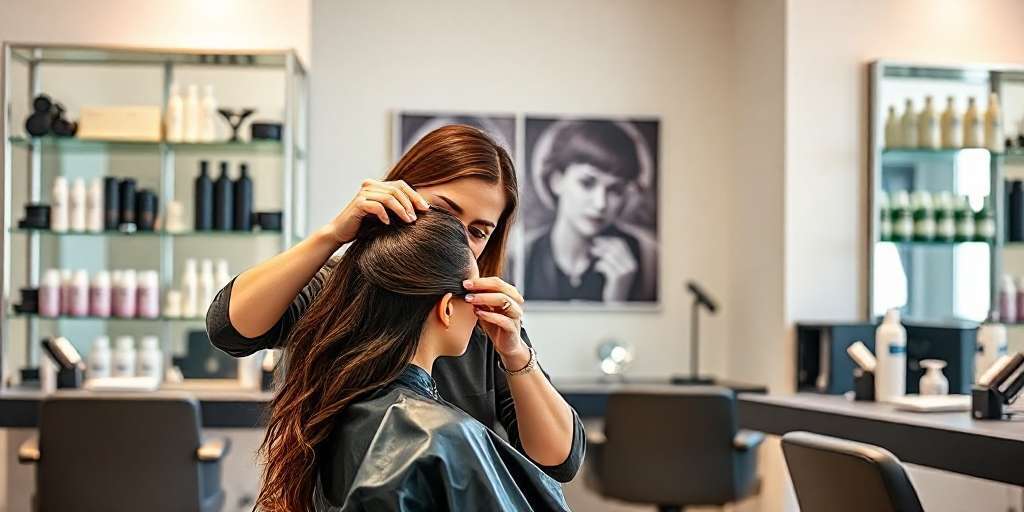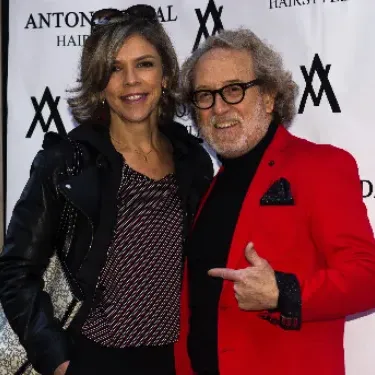Hair Stylist Tips for Finding Your Perfect Match
A hair stylist plays a crucial role in enhancing a person’s appearance and confidence. They offer a range of services beyond basic haircuts, including coloring, styling, and personalized care. Finding the right hair stylist involves research and understanding individual hair needs. This article will explore the responsibilities of hair stylists, how to choose one, and essential questions to ask during consultations.

Understanding the Role of a Hair Stylist
The role of a hair stylist encompasses much more than just providing haircuts. It combines both artistic sensibility and scientific understanding, creating a unique experience for each client.
The Art and Science of Styling
Hair styling is often viewed as an artistic endeavor, but it is rooted in science. Knowledge of hair texture, face shapes, and individual preferences allows stylists to design looks that not only are visually appealing but also harmonize with the client’s natural features. This dual approach helps in achieving sustainable styles that meet the client’s needs.
Beyond Basic Cuts: Comprehensive Services
Stylists offer a variety of services that extend far beyond simple haircuts. Their skills include:
- Creative hair coloring techniques, including balayage and ombre.
- Texturizing methods, such as layering and thinning.
- Specialized treatments for advanced hair health, including moisturizing and repairing options.
- Formal styling for events, such as weddings and parties.
This range of services ensures that clients have access to comprehensive hair care tailored to their unique needs.
Personalized Care and Recommendations
One of the key roles of a hair stylist is to provide personalized care. This involves not just executing a service but also understanding the client’s hair condition and maintenance requirements. Stylists often:
- Assess and analyze hair types to offer customized solutions.
- Recommend appropriate products that align with individual hair needs.
- Advise on techniques for at-home care, helping clients maintain their look between salon visits.
Such personalized attention fosters a strong relationship between stylist and client, enhancing overall satisfaction and promoting long-term loyalty.
How to Find the Right Hair Stylist Near You
Finding a skilled hair stylist involves careful consideration and research. Ensuring that the stylist matches individual needs can greatly enhance the overall experience.
Researching Local Stylists
Start by gathering a list of potential hair stylists in the area. This can be done through various methods, such as:
- Asking friends or family for recommendations.
- Searching online directories for local salons.
- Reviewing hairstylist websites for more information.
Evaluating Salon Quality
The quality of a salon can strongly influence the overall experience. Factors to consider include:
- Salon ambiance and cleanliness.
- The professionalism of the staff.
- Availability of modern tools and products.
A visit to the salon for a consultation can provide a clearer picture of its quality and service level.
Utilizing Online Reviews and Social Media
Online reviews serve as valuable resources for assessing stylists. They can highlight both positive and negative experiences from clients.
Engaging with Stylist Portfolios
Many stylists showcase their work on platforms like Instagram and Pinterest. Observing their portfolios can offer insight into their style and expertise.
Platforms for Finding Stylists
Dedicated websites and apps can facilitate the search for hair stylists. Popular platforms often allow users to view reviews, photos, and stylist details in one place.
Questions to Ask Potential Stylists
Choosing the right stylist involves asking the right questions to ensure a good fit and successful results. Here are key inquiries to consider.
Experience and Specialties
Understanding a stylist’s background is essential. Inquire about:
- Years of experience in the field.
- Specializations, such as coloring, cutting, or specific styles.
- Relevant training and certifications.
Understanding Hair Types: Curly, Straight, and More
Each hair type requires different techniques and products. It’s important to discuss:
- The stylist’s familiarity with various hair textures.
- Approaches used for cutting and styling curly versus straight hair.
- Knowledge of specific challenges, such as frizz or thinning hair.
Consultations: Setting Expectations
A successful consultation is pivotal for a satisfying haircut or style. Consider discussing:
Discussing Hair Health and Care
- How to maintain overall hair health post-styling.
- Best practices for daily hair care and nourishing treatments.
Understanding Hair Color and Styling Needs
- Desired color results and maintenance requirements.
- Products recommended for different hair colors and styles.
- Adaptation of trending styles in accordance with personal preference.
Hair Care and Maintenance Post-Styling
Proper hair care and maintenance after a styling session are crucial for preserving the look and health of the hair. Following a few essential practices can help maintain the desired style and vitality.
Recommended Products for Daily Routine
Using suitable products can significantly enhance the longevity of a hairstyle. Consider the following:
- Shampoo and Conditioner: Opt for sulfate-free and moisturizing formulas tailored for your hair type.
- Heat Protectants: Essential for shielding hair from styling tools, reducing damage during heat application.
- Styling Aids: Mousse, gels, and sprays can help hold the style in place while adding shine and volume.
Tools and Brushes for Home Use
Having the right tools is vital for maintaining hair between salon visits. Key tools include:
- Round Brushes: Perfect for creating volume and curls when blow-drying.
- Wide-Tooth Comb: Ideal for detangling wet hair without causing breakage.
- Flat Iron or Curling Wand: Useful for touch-ups and achieving various styles at home.
Scheduling Regular Appointments
Regular salon visits are essential for keeping hair healthy and refreshed. Suggested practices involve:
- Trimming: Scheduling haircuts every six to eight weeks can prevent split ends and maintain the shape of the style.
- Color Touch-Ups: If color-treated, regular appointments ensure a consistent and vibrant look.
Managing Hair Growth and Thinning
Addressing hair growth and thinning requires attention to both styling and maintenance. Monitoring changes in hair texture and volume can aid in decision-making regarding cuts and treatments.
Knowing Your Hair and Beauty Preferences
Understanding personal hair and beauty preferences is essential for enhancing one’s overall appearance. It involves exploring styles, integrating makeup, and embracing individual beauty.
Exploring Hair Styles and Fashion Trends
Staying updated with current hair styles and fashion trends allows individuals to express their personality through their hair. Popular styles often include:
- Bobs and lobs that frame the face effectively
- Textured layers for added volume
- Modern takes on classic styles, adapting them to contemporary aesthetics
Fashion trends evolve constantly, making it crucial to consider how a style complements personal features and lifestyle. Engaging with fashion shows, magazines, and social media platforms can provide inspiration and insight.
Incorporating Makeup and Beauty Services
Makeup can enhance a hairstyle significantly, creating a polished look. Key considerations for integrating makeup services include:
- Understanding skin tones for choosing the right foundation and colors
- Consulting with makeup professionals for techniques that match individual styles
- Choosing products that align with both hair and makeup aesthetics
Utilizing beauty services can streamline routines and ensure a cohesive appearance, complementing the overall look achieved from hairstyling.
Embracing Individual Beauty and Unique Image
Embracing personal beauty involves recognizing and celebrating what makes an individual unique. This may involve:
- Identifying styles that reflect personal identity
- Incorporating accessories that enhance hairstyles
- Working with stylists to find combinations of hair and makeup that highlight individuality
The journey toward self-awareness in beauty preferences is an empowering process. It fosters confidence and ensures that personal choices resonate with one’s inner self.






